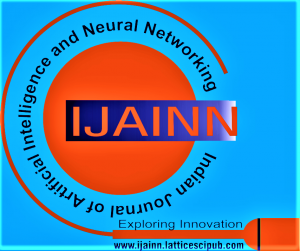![]()
Deep Learning Approaches for Detection of COVID 19 from CT Image: A Review
Suyash Kulkarni1, Sushila Sonare2
1Suyash Kulkarni, M.Tech Scholar, Department of Computer Science and Engineering, Lakshmi Narain College of Technology & Science, Bhopal (M.P), India.
2Prof. Sushila Sonare, Department of Computer Science and Engineering, Lakshmi Narain College of Technology & Science, Bhopal (M.P), India.
Manuscript received on 31 March 2022 | Revised Manuscript received on 04 April 2022 | Manuscript Accepted on 15 April 2022 | Manuscript published on 30 April 2022 | PP: 8-14 | Volume-2 Issue-3, April 2022 | Retrieval Number: 100.1/ijainn.C1050042322 | DOI: 10.54105/ijainn.C1050.042322
Open Access | Ethics and Policies | Cite | Mendeley | Indexing and Abstracting
© The Authors. Published by Lattice Science Publication (LSP). This is an open access article under the CC-BY-NC-ND license (http://creativecommons.org/licenses/by-nc-nd/4.0/)
Abstract: WHO (World Health Organization) classified COVID-19 (Corona virus Disease 2019) as a pandemic after a substantial number of individuals died from an illness. This virus has infected millions and continues to infect new victims every day. Traditional RT-PCR tests to identify COVID-19 are prohibitively expensive and time-consuming, thus researchers are turning to deep learning (DL)-based algorithms that utilize medical imagery such as computed tomography (CT) scans. This helps automate the scanning process. All areas of COVID-19 research targeted at halting the current epidemic are currently being conducted using deep learning. We looked at some of the newest DL-based models for detecting COVID-19 in CT lung images in this work. During our investigation, we gathered information on the many research resources that were accessible. This survey may serve as a starting point for a novice/beginner level researcher working on COVID-19 categorization. The COVID-19 and its rapid detection technique are described in full in this study. This is followed by a discussion of computed tomography (CT) and a review of deep learning and its different covid detection methods, such as RNN, CNNLSTM as well as DNN. Deep learning approaches have been used in several recent research on the identification of COVID-19 patients. To identify COVID-19, we reviewed the most recent DL approaches used in conjunction with CT scans. A DL system for disease detection during the COVID-19 epidemic is discussed in this study, as are many authors’ methodologies and the relevance of their research efforts, as well as possible difficulties and future developments.
Keywords: Coronavirus disease (COVID-19), Computed Tomography (CT) Screening, Deep Learning (DL).
Scope of the Article: Deep Learning
